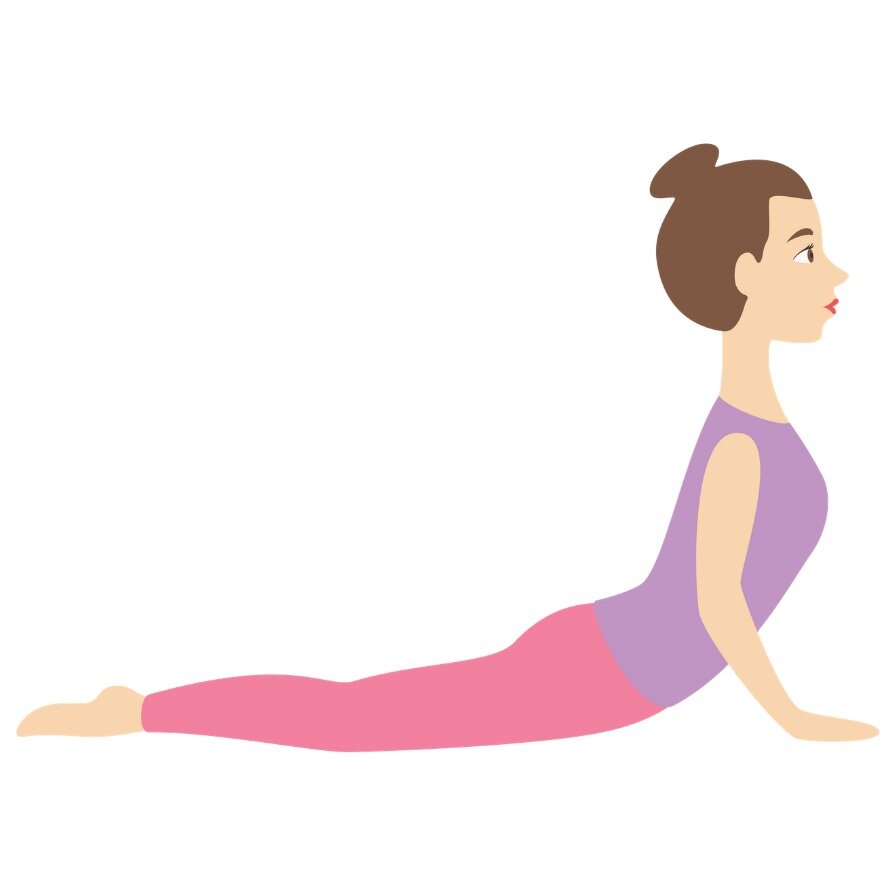Six Exercises for Lower Back Pain
Does “Tight hips mean weak glutes, which means increased load on the spine.”?
The lower back is robustly built, specifically designed for movement and support. Like any well designed machine, there are many parts that work together to give you the sense of seamless smooth movement that you experience, such as bending, lifting and twisting.
The lower back is made of five strong vertebral bones, stacked on top of each other, with a shock absorbing disc between each one which helps distribute the day to day forces evenly. Each segment of your back is woven intricately together by ligaments to provide further support. Lower back pain is a complex and persistent health problem, which affects everyone differently and therefore the experience differs from person to person.
Below is a list of common lower back pain diagnosis:
Disc injuries
Factrues and bony injuries
Arthritis
Stenosis
Sciatica Pain
Skeletal irregularities such as scoliosis
Radiculopathy or referred pain
Disc degeneration
Ligament sprains
Muscle injury or strains
On occasion, back pain can also be caused by an underlying condition such as:
Kidney stones
Tumors
Visceral referral (gut issues)
Infection
Fibromyalgia
Osteoporosis
Rhuematoid Arthritis
The following exercises and stretches are great for a lot of people. Remember to go for quality exercise over quantity. Less is more.
Best exercises for lower back pain:
Back Extensions or Cobra
How to:
Lie on your stomach, arch back and come to rest on your forearms and elbows, look up, extending your neck towards the ceiling. Hold the position for 10 seconds. Repeat 5-10 times as required to improve your lower back pain.
Knees to Chest Stretch
How To:
Lie on back with your knees bent and your feet flat on the ground. Reach down and pull your legs towards your chest. Hold for around 5 seconds. Relax and rest your legs down, before doing the same thing again. Repeat 10 times.
Childs Pose
How To:
Kneel on all fours. Rest your buttocks on your heels and stretch your arms as far out in front as you can, whilst maintaining hip positioning. Aim to hold the pose for 30 seconds and repeat 3-4 times.
Bird Dog Pose
How to:
Kneel on all fours. Raise your right arm and left leg, keeping your shoulders and hips parallel to the floor. Lengthen the back of your neck and tuck your chin into your chest and gaze at the floor. Hold this position for 5 seconds. The lower back to the starting position and do with opposite arm and leg. Repeat 10 times in total.
Cat Camel Pose
How to:
Kneel on all fours, in a table pose, with a neutral spine. Inhale, lift your head, relax your shoulders away from your ears, gaze ahead, and lift tailbone towards the ceiling. As you exhale, tuck your tailbone under drawing your pubic bone forward, rounding your spine outward, tuck your chin in your chest. Repeat 10 times.
Glute Bridge
How to:
Lie on your back with your knees bent to 90 degrees, placing your feet and heels flat on the ground. Squeeze your buttocks and abdominal muscles and drive through your heels into the ground in order to lift your hips whilst keeping your shoulders on the floor. Hold for 5 seconds trying to maintain a straight line through your knees, shoulders and hips. Repeat 10-15 times.
Chronic lower back pain is linked with specific muscle tightness (erecter spinae, psoas, ITB/TFL, hip external rotators, hamstring and grastocnemius), the tightness of the muscles result in a change of the back biomechanics. These muscles limit the body’s ability to perform the movements of trunk flexion, extension and rotation without triggering or aggravating lower back pain . The combination of dynamic stretching and trunk stabilisation has positive effects on lower back pain.
The exercises above are effective for lateral stabilisation; stabilisation of glutes abductors, core and hamstrings. Therefore, strong glutes does mean less load paced on the spine. The research states that people who experience chronic lower back pain, also have poor core stabilisation, altered lumbopelvic posture, muscle imbalance and faulty movement. Shiri, Coggon, & Falah-Hassani (2017) indicated that strengthening of the spinal muscles in combination with aerobic exercise can reduce the subsequent occurrence of lower back pain by 30% as well as the intensity and associated disability with it.
Rest is not a rehab protocol commonly provided and nor should it. Doing gentle, pain free movements are a great place to start. Remember to focus on the quality of the movement and not the quantity. However, whilst these exercises are great for a lot of people, they are not suitable for everyone. If the exercises below cause any increase in discomfort or pain, please seek further professional medical assistance.
Other factors that need to be considered with back pain and occupations are bio-mechanical movements that assist other parts such as a strong core, strong glutes, mental health as well as physical health and diet. Even consider going for a 30 minute walk, as exercise alone reduces the risk of lower back pain by 33%. Further, when completing any bending or rotation/twisting movements, be mindful about brace your core and activating your glutes appropriately.
If you need help please contact your local allied health professional or book with us online at www.theotplace.com.au.
Kelcy, T. & Jonathan, M. (2018). Single-Leg Glute Bridge. Strength and Conditioning Journal. 40(2): 110-114.
Bhadaruia & Gurudut. (2017). Comparative effectiveness of lumbar stabilization, dynamic strengthening, and Pilates on chronic low back pain: randomized clinical trial. Journal of exercise rehabilitation. 13(4): 477–485.
Colgrove, Y., Gravino-Dunn, N., Dinyer, S., Sis, E., Heier, A. & Sharma, N. (2019). Physical and Physiological effects of Yoga for an Underserved Population with Chronic Low Back Pain. International Journal of Yoga. 12(3): 252 -264.
(Chan, Adnan, & Azmi. 2019. EFFECTIVENESS OF CORE STABILITY TRAINING AND DYNAMIC STRETCHING IN REHABILITATION OF CHRONIC LOW BACK PAIN PATIENT. Malaysian Journal of Movement, Health & Exercise, 8(1), 1-13).






